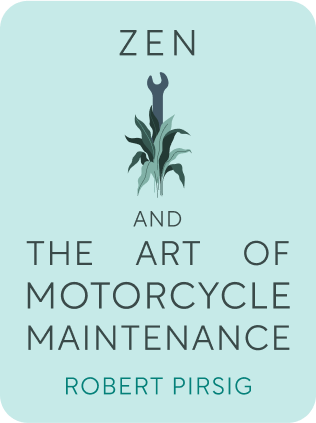

This article is an excerpt from the Shortform book guide to "Zen And The Art Of Motorcycle Maintenance" by Robert Pirsig. Shortform has the world's best summaries and analyses of books you should be reading.
Like this article? Sign up for a free trial here .
What is the difference between classical vs romantic thinking? How does Robert Pirsig explain this difference in Zen and the Art of Motorcycle Maintenance?
In his book, Robert Pirsig explains the two types of thinking. He focuses on the differences between classical vs romantic thinking.
Keep reading to find out more about classical vs romantic thinking.
Classical vs Romantic Thinking
This is the chautauqua on the differences between classical vs romantic thinking.
Chautauqua: Phaedrus and the Classical/Romantic Dichotomy
Phaedrus, Pirsig finally tells us, was a misunderstood and now-forgotten philosopher. In an ideal world, Phaedrus would stay forgotten, but Pirsig believes he must address Phaedrus head on to exorcise and bury him forever. Unlike the Sutherlands—and much like Pirsig himself—Phaedrus viewed the world entirely in terms of its underlying form. To properly illustrate the qualities of this particular worldview, Pirsig deploys an admittedly broad but useful dichotomy:
Classical Understanding. A person of classical understanding is rational, scientific, unemotional, cerebral, and technologically savvy. She is more concerned with the underlying form of things than the appearance of things—that is, she cares more about how a thing works than how it looks. Motorcycle maintenance, for example, is classical all the way.
Romantic Understanding. A romantic, oppositely, is intuitive, emotional, creative, and artistically inclined. He is more concerned with immediate appearances than underlying forms—he values aesthetics over utility. Motorcycle riding, for example, is romantic.
Each mode of understanding features in the other. For example, a romantic sees the classical mode of understanding as boring, robotic, overly deliberative—oppressive. A classic, meanwhile, sees the romantic mode as silly, impetuous, irrational—dangerous.
The two modes are, by all appearances, irreconcilable; and Pirsig traces the tumult of the Sixties to the deep antagonism between the classical (“square”) and the romantic (“hip”).
Phaedrus’s ideas concerned this perennial divide, but he was ignored, then dismissed, and eventually considered insane. Pirsig opines the insanity was real but caused by people’s opinion of Phaedrus and his ideas rather than an illness. Phaedrus’s end came in the form of an arrest and the permanent removal from society.
The riders stop for gas, and Chris says he’s hungry. Pirsig tells him he either eats with everyone else or not at all. Soon enough they’re back on their cycles. The road they’re traveling is in disrepair and there’s traffic; the sun is bright and the weather sweltering. Pirsig escapes the rough riding by meditating further on the classical world of Phaedrus.

———End of Preview———
Like what you just read? Read the rest of the world's best book summary and analysis of Robert Pirsig's "Zen And The Art Of Motorcycle Maintenance" at Shortform .
Here's what you'll find in our full Zen And The Art Of Motorcycle Maintenance summary :
- How an unnamed narrator and his son are on a cross-country motorcycle journey
- Why technology can be creative
- How to focus on what's in front of you in order to get exactly what you need






